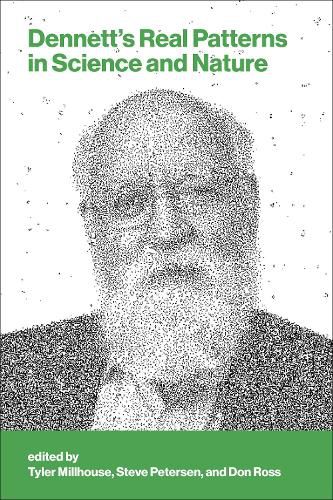Readings Newsletter
Become a Readings Member to make your shopping experience even easier.
Sign in or sign up for free!
You’re not far away from qualifying for FREE standard shipping within Australia
You’ve qualified for FREE standard shipping within Australia
The cart is loading…






How the concept of a pattern, as understood in information science and applied in contemporary AI, can address deep questions in science and philosophy.
The explosive growth of AI and machine learning in recent decades is predicated on the recognition and exploitation of patterns in data. Of course, scientists have engaged in their own-less automated-processes of pattern recognition since the birth of science itself, and biological organisms evolved their own neural networks for pattern recognition long before people and their technology came along.
In his seminal work, "Real Patterns," philosopher and cognitive scientist Daniel Dennett laid out a roadmap for connecting the idea of "patterns" as understood by information theory to the practices of scientists and to our own cognitive capacity to model and predict the world around us. In this book-the first dedicated to the topic of real patterns-Tyler Millhouse, Steve Petersen, and Don Ross follow this roadmap. They explore the relevance of patterns to important aspects of both science and nature, including the emergence of high-level structure in physics; the nature of biological species; the measurement of welfare in economics; the evaluation of causal models; and the possibility of understanding in large neural networks.
$9.00 standard shipping within Australia
FREE standard shipping within Australia for orders over $100.00
Express & International shipping calculated at checkout
Stock availability can be subject to change without notice. We recommend calling the shop or contacting our online team to check availability of low stock items. Please see our Shopping Online page for more details.
How the concept of a pattern, as understood in information science and applied in contemporary AI, can address deep questions in science and philosophy.
The explosive growth of AI and machine learning in recent decades is predicated on the recognition and exploitation of patterns in data. Of course, scientists have engaged in their own-less automated-processes of pattern recognition since the birth of science itself, and biological organisms evolved their own neural networks for pattern recognition long before people and their technology came along.
In his seminal work, "Real Patterns," philosopher and cognitive scientist Daniel Dennett laid out a roadmap for connecting the idea of "patterns" as understood by information theory to the practices of scientists and to our own cognitive capacity to model and predict the world around us. In this book-the first dedicated to the topic of real patterns-Tyler Millhouse, Steve Petersen, and Don Ross follow this roadmap. They explore the relevance of patterns to important aspects of both science and nature, including the emergence of high-level structure in physics; the nature of biological species; the measurement of welfare in economics; the evaluation of causal models; and the possibility of understanding in large neural networks.